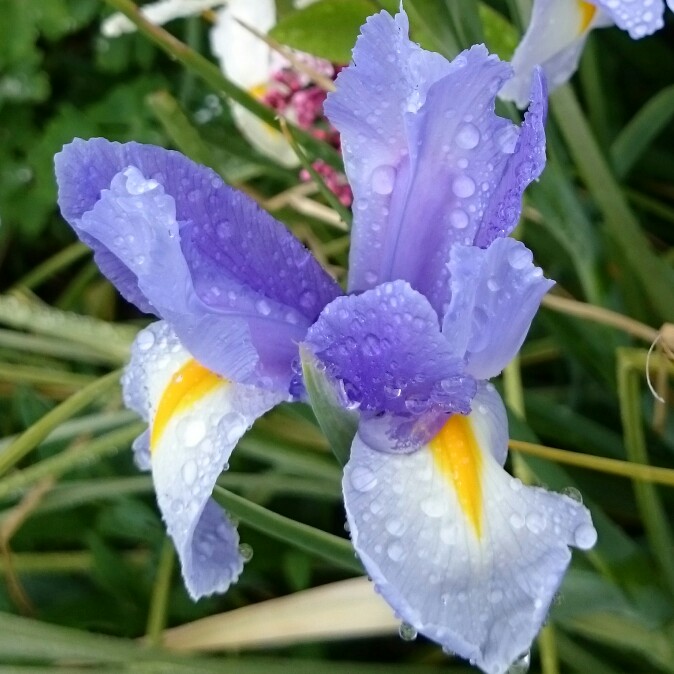
Iris x hollandica 'Pioneer'
Dutch Iris 'Pioneer'
Dutch Iris have narrow, linear leaves, and large flowers up to 60 cms. in height. in a wide range of colours, in Spring and early Summer. 'Pioneer' has gorgeous exotic looking fragrant violet-purple petals with sunny yellow throats. They also make fabulous cut flowers.
Contributed by @Andreamarie
-
Full sun to partial shade
-
Occasional watering
-
Frost Hardy: 23F (-5°C)
-
Light and free draining
Common name
Dutch Iris 'Pioneer'
Latin name
Iris x hollandica 'Pioneer'
type
Bulb
family
Iridaceae
ph
6.0 - 7.0 Acid - Neutral
Plant & bloom calendar
-
Best time to plant
-
When the plant will bloom
full grown dimensions
 0.30 M
0.60 M
0.30 M
0.60 M
Iris x hollandica 'Pioneer'
Dutch Iris have narrow, linear leaves, and large flowers up to 60 cms. in height. in a wide range of colours, in Spring and early Summer. 'Pioneer' has gorgeous exotic looking fragrant violet-purple petals with sunny yellow throats. They also make fabulous cut flowers.
Flowering Season
From Late Spring TO Early Summer
Dutch Iris bloom from late Spring to early Summer
Planting Bulbs in Autumn
From Early Autumn TO Mid Autumn
Ideally the Dutch Iris bulb would need to be planted in a sunny spot so that it can receive at least six hours of sun a day as well as being planted in well drained but moist soil. Avoid hoeing around the base of the plants as the roots are near the surface and easily damaged. Plenty of mulch can help avoid weed growth around them.
Propagating by division
From Late Summer TO Early Autumn
Split the irises every year, immediately after flowering has ended. At this point the early summer leaves and flower stems have started to die back, and the late summer leaves have started to grow. Split individual plants with a light spade, leaving the part to be retained undisturbed in the soil. Remove about 30-50% of the total plant mass. The aim is to leave plants about the size that would fit under an A5 sheet of paper. After splitting, cut back the early-summer leaves on the remaining plants, and cut or break off the flower stems. Finally, top-dress the plants.
Planting bulbs
From Late Summer TO Early Autumn
The bulbs should be planted in late Summer or Autumn, and only about 2in deep. Great care must be taken when planting this iris not to damage the fleshy roots. Add coarse grit and bone meal before planting.










